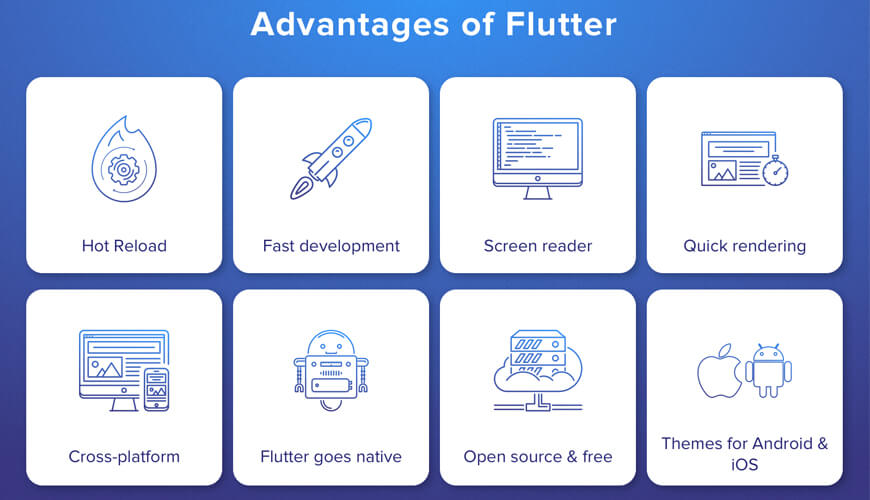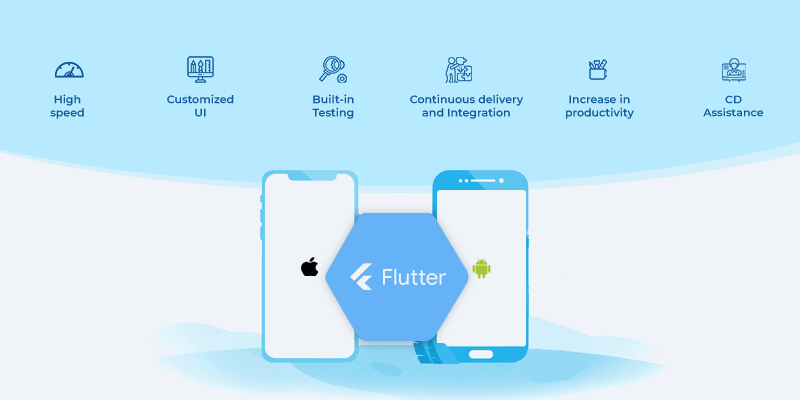Mobile Apps Services are exploding right now. Statista puts the number of apps available in the Google App Store at 2.7 million in 2019 and is expected to grow at four times the rate of Apple’s App Store.
StoneTower data predicts that the App Store of Apple will hit 5 million Apps in 2020, double its size now!
We live in a world populated with highly dynamic mobile apps and the rate of their growth is exploding. The app development market is growing exponentially.
In the race for the app development frameworks, Cross-Platform App Development is the winner hands-down choice of Android App Development companies owing to the ease of development.
You only have to develop one app instead of two. Thus expenses are reduced, which makes it more attractive to businesses that are turning to mobile app development.
It is enticing to the developers because it saves a lot of effort and time for development. An array of tools is used for developing mobile apps. Some such apps are PhoneGap, Xamarin, React Native and Flutter.
Flutter, the open-source SDK, introduced by Google allows developers to build apps easily and with less time without compromising on the quality. Though the newest kid on the block, Flutter has a lot of advantages making it the choice platform. In Flutter vs Reactive native, Flutter is faster and more efficient.
Advantages of Flutter for the future of App Development:

☛ Cross-Platform Development
As we mentioned earlier Flutter is an open-source mobile application development framework thus eliminating the need to build for two platforms.
A single code can be used for both iOS and Android. Flutter has a lot that the others don’t like faster development and native experience.
Flutter apps are independent of the platform.
☛ Easier to learn
Dart is a simple and easy-to-learn programming language introduced by Google in 2011. Dart supports the object-oriented concept that is easier for Java developers to understand.
Any Java developer can learn Flutter easily.
☛ Clear Picture Of The End-Product
With Flutter developers can have an idea of what the end product looks like, making Mobile application development company less time-consuming.
A mobile app developed in Flutter looks native on both iOS and Android. This will make it attractive for businesses who aim to create an MVP version of their apps.
☛ Less Code
Build only once and deploy on both iOS and Android. Flutter runs on the programming language Dart, which uses Just-in-Time or JIT compilation thereby improving the app development workflow by allowing a hot reload.
There is no need to build an entirely new build for the developer can check the changes in the output he has made instantly. Flutter development Services are less time-consuming because developing and designing goes hand in hand with Flutter.
There is no need to start from scratch every time they make any changes. Build native apps in record time.
☛ Widgets
Flutter has an amazingly rich collection of widgets library, which gives the unbelievable capability for creating complex custom widgets according to the client’s needs.
Widgets can also be used for the app itself. You can build highly customized and responsive apps using the wide array of widgets available in Flutter in Google’s Material Design and in Apple’s style with the Cupertino pack.
Makes flutter the best cross-platform app development technology in 2019.
☛ Themes for both iOS and Android

Developers can use two separate themes for Both Android and iOS apps in Flutter.
They can choose a Material color in an Android app while choosing some light colors in iOS or vice versa.
The choice depends upon the individual choice and the client’s wish. No other cross-platform app development technologies provide this.
☛ Receptive Frameworks
The advanced receptive framework of Flutter allows for building complex APIs and UI easily.
Developers will love Flutter because of hassle-free 2D, UI animation, and gesture creation.
☛ In-Depth Documentation, Easy Set Up and Google’s Support
Flutter is introduced by Google, and thus gets support from the Material Design team.
Flutter can be handled easily on any OS which makes it easier to set up and start coding.
The in-depth documentation that Google provides is guaranteed to make flutter an industry favorite. It is neat and simple and organized well.
They have also included information and tools for cross-platform app development.
☛ Platform Independent
Apps made with Flutter have next to zero compatibility issues with various operating systems.
Developers don’t have to spend a lot of time debugging.
☛ Automated Support For Build And Release
The release of a mobile app on the Google Play Store or the App Store is time-consuming and is tougher with complex hybrid 0r cross-platform apps.
The stronger command line of Flutter comes to the rescue here. Also, the deployment process is documented in-depth manner which makes it the top cross-platform development framework of choice.
Conclusion
Flutter development is easy, simple, less time-consuming, and reduces costs. It looks as if Flutter can immensely benefit tech-based firms, start-ups, and E-commerce firms.
Flutter might lag behind in the race of Flutter vs React native but has an immensely bright future. Google is about to release a major Flutter update in the near future, ushering in a new future for Flutter. Developers and Mobile App Development companies should make the final choice on the basis of their own requirements.
